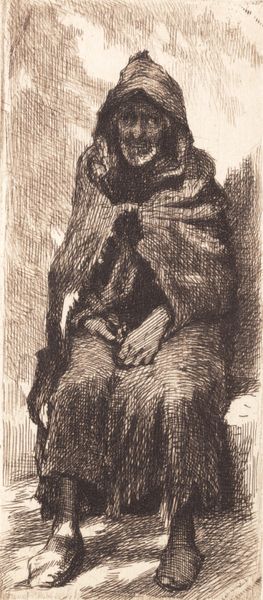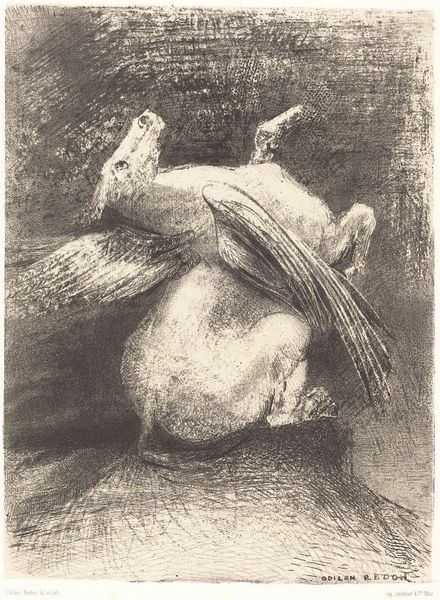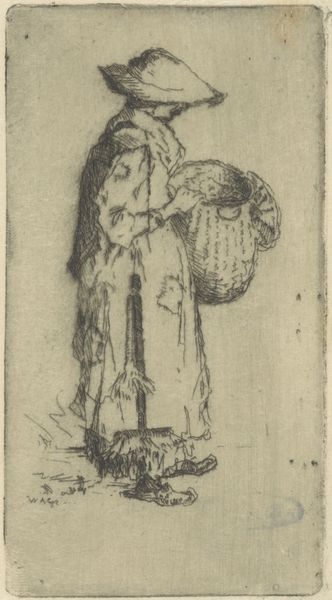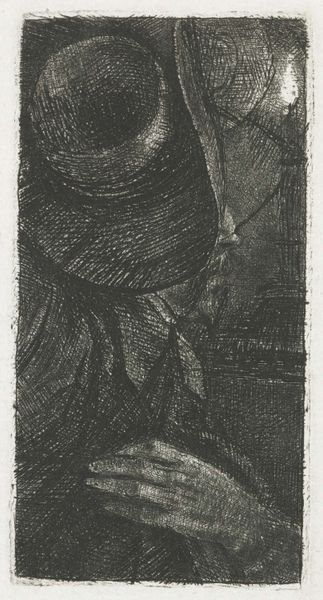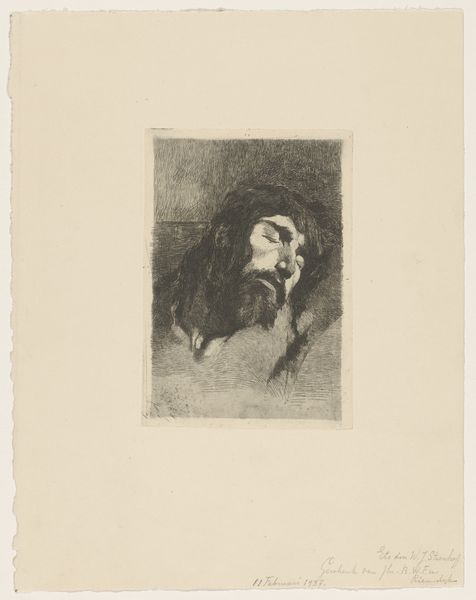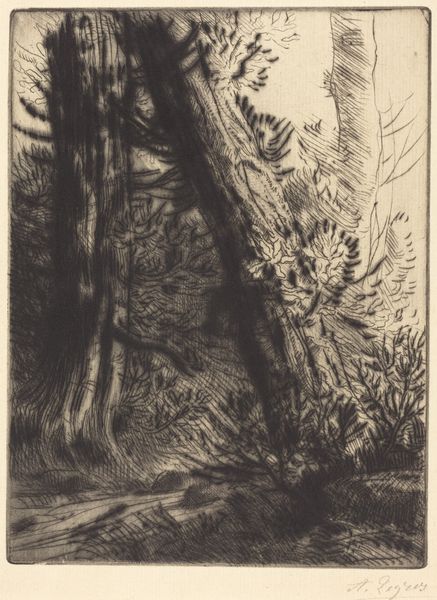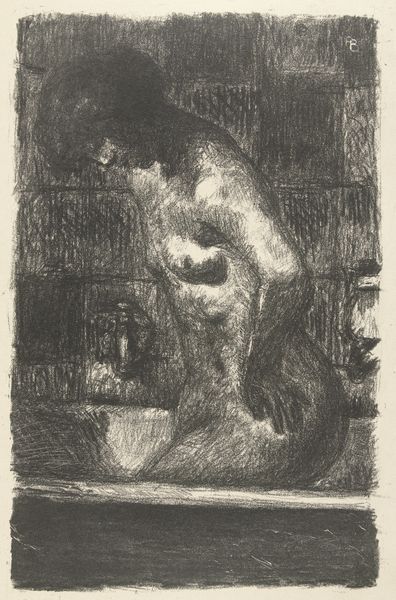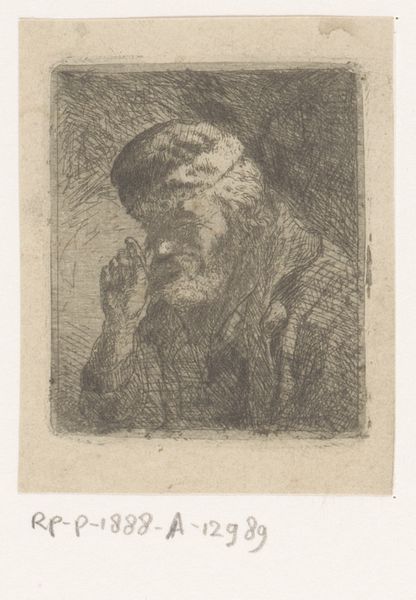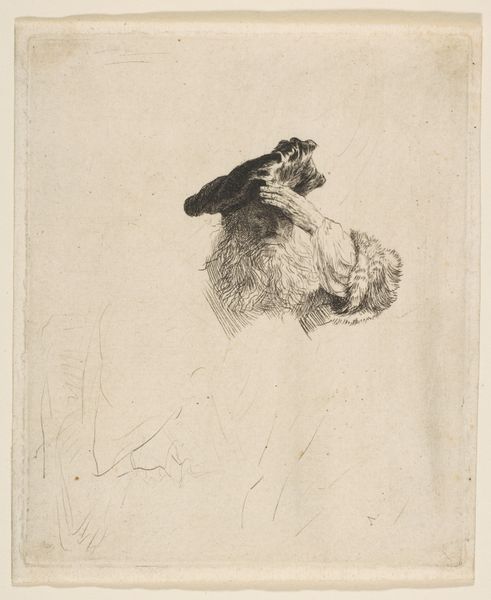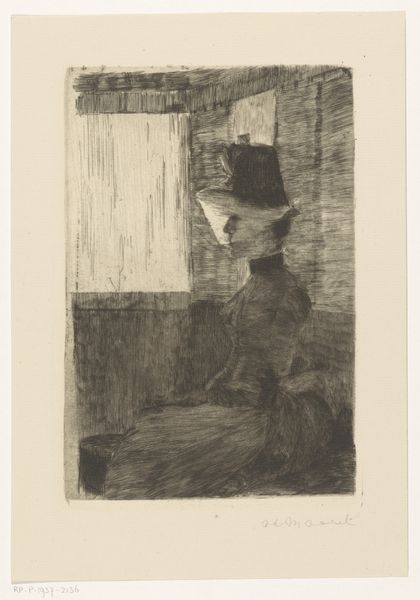
drawing, print, etching
#
drawing
#
16_19th-century
# print
#
impressionism
#
etching
#
realism
Dimensions: plate: 5 1/4 x 4 in. (13.5 x 10.2 cm) sheet: 14 1/2 x 10 1/2 in. (36.8 x 26.7 cm)
Copyright: Public Domain
Curator: Here we have "The Rabbit," an etching by Édouard Manet, created in 1866. It’s currently housed right here at the Metropolitan Museum of Art. Editor: My immediate impression is a sense of starkness, almost discomfort. The dark, scratchy lines give the image a rough texture, and the subject matter itself, a dead rabbit hanging, it's definitely not what you expect from Impressionism. Curator: It's an interesting example of Realism influencing Impressionism. While Manet is celebrated for capturing modern life, "The Rabbit" places itself in a tradition of still life and game paintings that were prevalent in earlier eras. Consider how such imagery was used within the societal rituals of dining and hunting. Editor: I see that. And beyond that initial read, what does this imagery say about how human society perceives animals? The animal here has been clearly subjugated, stripped of agency. The casual presentation as just another object… it says a lot about a certain history, a certain worldview. Curator: Etchings like this were actually significant in democratizing art. Prints allowed for wider distribution of imagery, so it wasn’t just aristocratic audiences who got to experience visual art. It contributed to the growth of a broader public engagement with art. Editor: That's important. But let’s also think about whose voices were absent from that “public”. For women artists and artists of color during that time, the accessibility was severely limited, influenced by class, gender and racial hierarchies. This "wider distribution" primarily benefitted those already in power. Curator: An excellent point, prompting us to delve further into its sociopolitical ramifications. Looking closely at the execution of the etching, one sees Manet using dense hatching to create shadow and form. It’s not just a faithful rendering but an attempt to convey the tactile qualities of the fur. Editor: It’s successful on that front, almost too successful for me personally. But these depictions, however technically impressive, carry an undeniable weight of historical context. We have to unpack these works critically. Curator: Precisely, and in doing so, enrich the viewer's overall encounter. Editor: Ultimately, understanding the complexities of its creation, distribution and reception grants a greater insight. Curator: Indeed, offering insight far deeper than that conveyed on the surface.
Comments
No comments
Be the first to comment and join the conversation on the ultimate creative platform.
